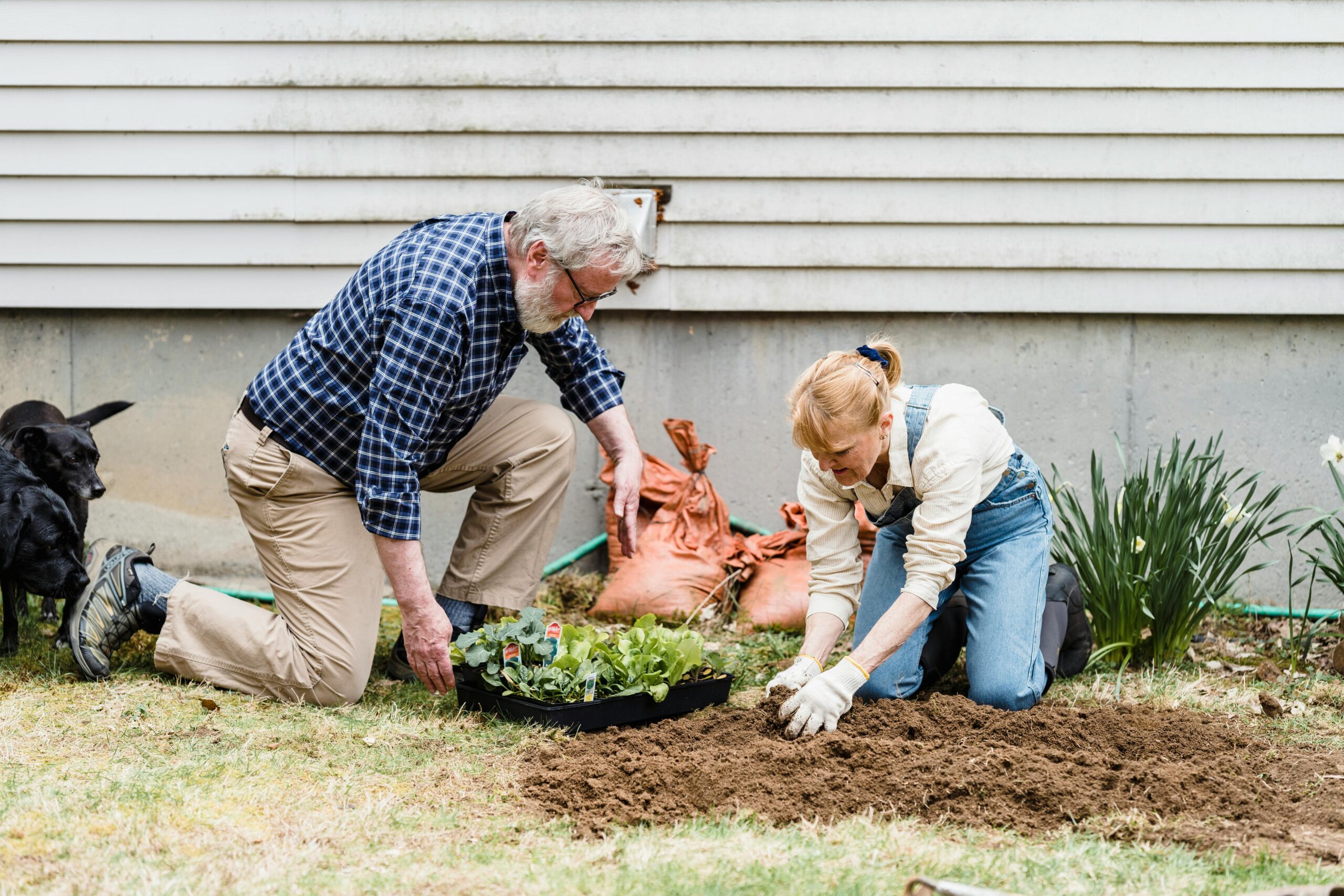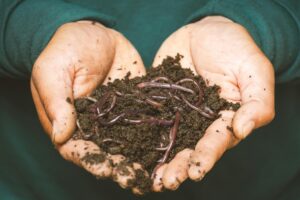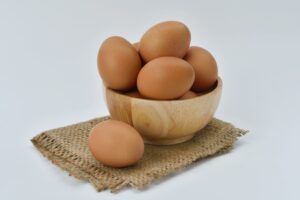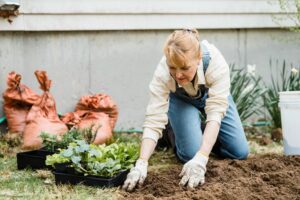Easy Composting Tips And Tricks

Embracing a greener future is at the forefront of the minds of millions of Americans. One simple yet impactful way to contribute to this agenda is through composting. Many people have begun to acknowledge and embrace the benefits associated with composting, as well as the positive effect that it can have on our environment.
As sustainability and environmental consciousness grow in popularity, composting is seen as an effective way to reduce waste and close the nutrient cycle. If you are new to the idea, composting can seem daunting and it’s understandable that certain individuals may think it’s a complicated process. However, it is truly quite simple and we’re going to tell you everything you need to know to start your composting journey!
The Art of Composting

Biodegradable waste is in integral part of compost.
The core idea behind composting is to discard and recycle organic food scraps, garden material and other biodegradable waste through natural decomposition. This dynamic process can transform organic waste into nutrient-rich soil through entirely natural processes. We called composting an art because it requires a good balance of moisture, aeration and different textures and ingredients.
Microorganisms and in the soil such as fungi and bacteria play an important role in converting the waste into compost. These tiny organisms work together to convert complex compounds into simpler forms, releasing heat as they digest the materials and transforming them into nutrient-rich humus. This humus can in turn be used as an effective fertilizer as well as a suitable growing medium for garden beds, and even houseplants.
Benefits of Composting

Composting has many upsides!
There are many benefits associated with composting which makes it clear that this green initiative is a proactive tool in fighting for a more sustainable future. We picked out the top three benefits that composting has on the environment!
Waste Reduction
By actively engaging with this process, you’re effectively recycling any compostable waste. This leads to less waste ending up in landfills which has a positive impact on the environment. When organic waste is left to decompose within landfills, it releases methane gas which is one of the potent greenhouse gasses currently contributing towards global warming. Additionally, less space being taken in a landfill means less of the natural environment needs to be destroyed to provide space for waste facilities such as landfills and local dumping grounds.
Environmental Protection
Composting minimizes the need for chemical fertilizers which can harm the environment. Many chemical fertilizers have a negative effect on insect life, microorganisms in the soil and they can leach into water systems and in turn pollute them. With composting you can achieve the same result as chemical fertilizers without the guilt! Furthermore, by enhancing the soil quality, composting promotes healthy ecosystems and in larger scale operations, it can minimize the risk of soil erosion.
Soil Enrichment
The nutrient-rich humus that is created by composting can enhance soil structure and fertility. By enhancing the quality of the soil, compost can eliminate the need for chemical fertilizers. When organic matter decomposes, it increases the soil’s ability to retain moisture. This allows the soil’s nutrient-holding capacity to increase, which allows beneficial microbial activity to thrive! This in turn provides the optimal conditions for plants to live and grow in.
Essential Ingredients For Composting

Green materials can be in your kitchen.
One of the key elements in the art of composting is achieving the right carbon-to-nitrogen (C:N) ratio. This ratio refers to the balance between “brown” materials, rich in carbon (such as dry leaves, straw, and wood chips), and “green” materials, high in nitrogen (such as grass clippings and kitchen scraps).
Green Materials
The green materials in compost provide the nitrogen, moisture and other vital nutrients needed for composting. Green materials for composting include kitchen scraps like fruit and vegetable peels, coffee grounds, tea leaves, and eggshells. Garden waste such as freshly cut grass, non-seed-bearing weeds, and plant trimmings are also ideal. Leaves from plants like comfrey, clover, or alfalfa are considered green materials due to their high nitrogen content!
Brown Materials
The brown materials used in compost are essential for holding the structure and balance of the compost pile. Fallen leaves, dried grass, and straw, which are abundant in autumn, not only provide carbon but also enhance the structure of the compost pile. Similarly, small branches, twigs, and woody prunings can contribute carbon, but they should be broken or cut into smaller fragments for quicker breakdown. Shredded newspaper, cardboard, and paper products (excluding glossy or colored paper) are valuable brown materials that supply carbon to the compost pile.
Composting Do’s And Don’ts
Whenever you’re starting something new, it’s always best to learn about any common mistakes as early on as possible. To help you on your composting journey, we’ve compiled a short list of the do’s and don’ts!
The Do’s of Composting
First, aim for a moist environment, avoiding excessive water that can make the compost soggy. Striking a balance between brown and green materials, such as dried leaves and fresh vegetable scraps, ensures a diverse mix and prevents overloading the compost with one type of material. Regularly turning the pile promotes aeration, allowing oxygen to reach the microorganisms responsible for decomposition. For an added boost, consider incorporating earthworms or compost starter to accelerate the process.
The Don’ts of Composting
Firstly, avoid including diseased plant material or weeds that have mature seeds. Those may lead to the spread of diseases or unwanted weed growth. Additionally, refrain from adding pet waste to the compost pile, as it may contain harmful pathogens that can pose a risk to your health. It’s also essential to avoid using compost that hasn’t fully degraded yet on live plants or in your garden, as it may be too potent and cause harm. Lastly, it’s best to refrain from using any cooked food, as it can attract pests and create unpleasant odors!
Kitchen Scraps: What Can And Cannot Be Composted

Eggshells are suitable for compost.
Considering which kitchen scraps to compost and which to throw away may be tricky at first. But with a little bit of guidance and practice you’ll be sorting like a pro in no time! Generally, fruit and vegetable scraps, such as peels, cores, and trimmings, can be composted. Coffee grounds, tea bags (make sure they are made of compostable material), eggshells, and nutshells are also suitable for compost. These are considered to be green materials and are high in nitrogen.
With that being said, meat, fish, dairy products, and oily foods should not be composted as they can attract pests and create major odor problems. Similarly, cooked food, including grains, pasta, and bread, can attract pests and should not be composted. Grease, oil, and fat should also be kept out of the compost pile as these foods can disrupt the process and create some unwanted smells!
Different Methods of Composting
There are many methods of composting, from simple backyard compost piles to utilizing microorganisms. Many of these methods overlap and can enhance the process. Let’s take a look at three methods that have been found to be very effective.
Backyard Composting

Backyard Composting
Whether it’s a cool, shady spot or a dedicated composting bin, finding the right location is key. Consider your yard space and select a suitable spot that fits your needs. Layer your compost pile with a balanced mix of organic materials. Combine fruit and vegetable scraps, yard waste like leaves and grass clippings, and small amounts of paper or cardboard. Keep watering your compost pile approximately once a week, ensuring it remains moist but not overly saturated. Keep turning your compost pile with a pitchfork or spade for a few months, and you’ll witness the transformation. Apply to your garden bends once your compost has reached a rich, dark consistency!
Vermicomposting
The basic process that drives vermicomposting is the use of earthworms, which consume the waste, breaking it down and leaving behind nutrient-rich worm castings or vermicompost. The red earthworm, Eisenia fetida, is particularly popular for compost creation. Start by setting up a compost bin and filling it with brown materials such as cardboard and shredded paper to create a bed in the bin. Introduce the worms to the bed, and slowly begin to add green materials like vegetable scraps and crushed eggshells. After a few months the worms will convert the waste into dark, rich vermicompost. Separate the worms from the vermicompost using methods like the “light harvesting” technique or by creating feeding zones. Use vermicompost in your garden or potted plants!
Aerobic Composting
Aerobic composting is a method that encourages ample use of oxygen. Increased oxygen supports the activities of aerobic microorganisms, such as bacteria and fungi, which thrive in its presence. Regularly aerating the compost pile is essential for successful aerobic waste management. You can achieve this by using a pitchfork, compost aerator, or a compost tumbler designed for easy mixing and aeration. Turning the pile introduces fresh oxygen, promotes even moisture distribution, and prevents the formation of anaerobic zones that can result in unpleasant odors.
Conclusion
Overall, the art of making compost combines science, intuition, and a touch of creativity. It invites individuals to actively participate in the natural cycle of life, transforming waste into valuable resources and contributing to a more sustainable and vibrant ecosystem. Composting is a great way for you to fight against climate change within your own capacity as well as a means to inspire those around us to live more sustainably. With a little bit of practice, you could be a master composter in no time at all!


